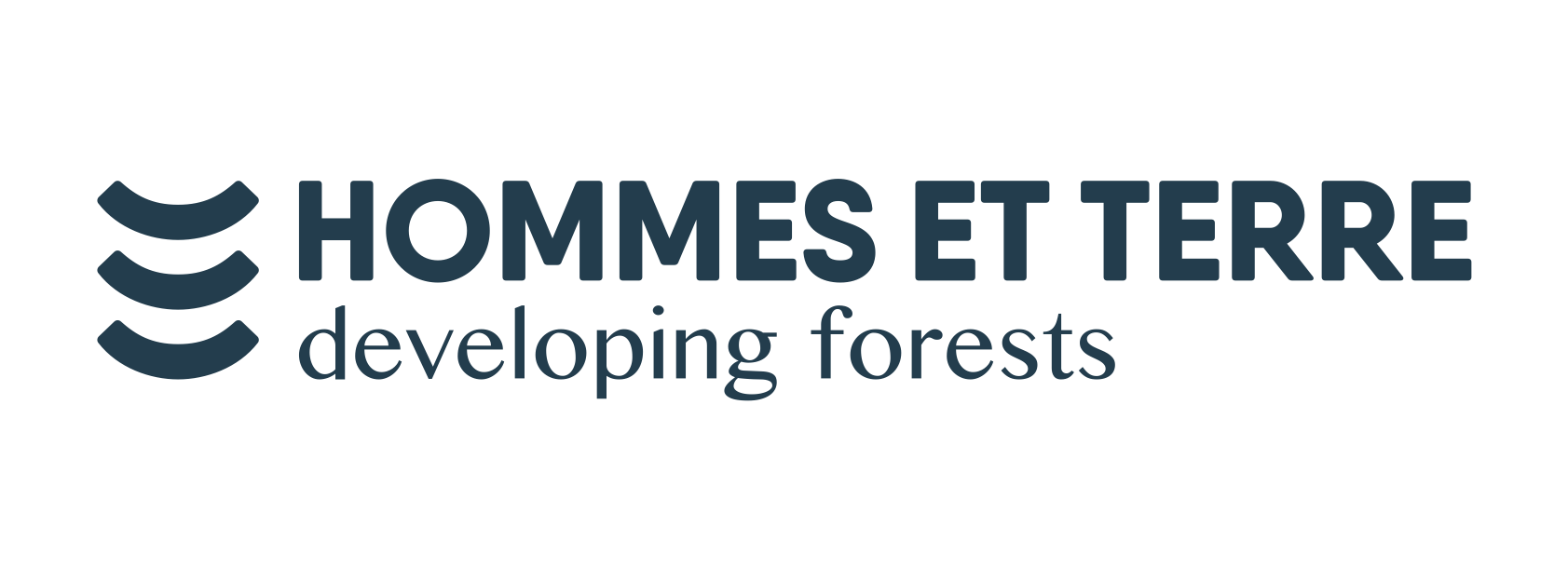Hommes et Terre is currently restoring over 15,000 hectares of degraded land. The company uses its own operational resources for this work, while calling on its expertise to effectively manage each reforestation site.
Today, Hommes et Terre is active in Burkina Faso, Mali, Senegal and Côte d’Ivoire.
These resources and capacities are grouped in five types of service.
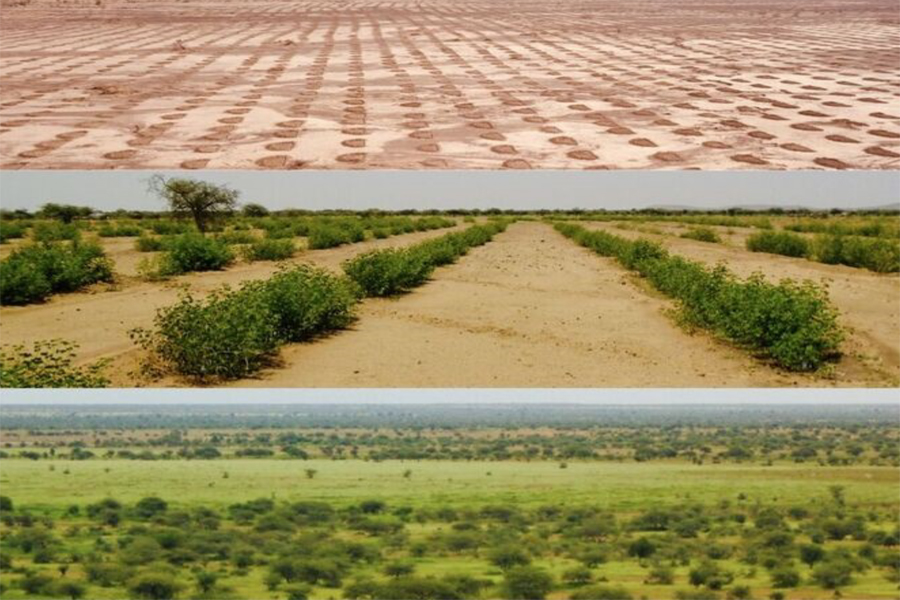
Ploughing and landscaping
In order to restore the land’s fertility, it must be ploughed… Hommes et Terre mainly calls on a technique based on strengthening water control and maximising water infiltration. The water must be controlled and retained by working the soils and making hydraulic structures.
To carry out this work and make these structures, Hommes et Terre calls on a technical team of 12 experienced and qualified people. The technical team operates under the management of an Executive Director – a forestry and environmental engineer – who is responsible for selecting degraded land for work, as well as for ensuring the quality of the work.
The team comprises tractor drivers, mechanics and site managers.
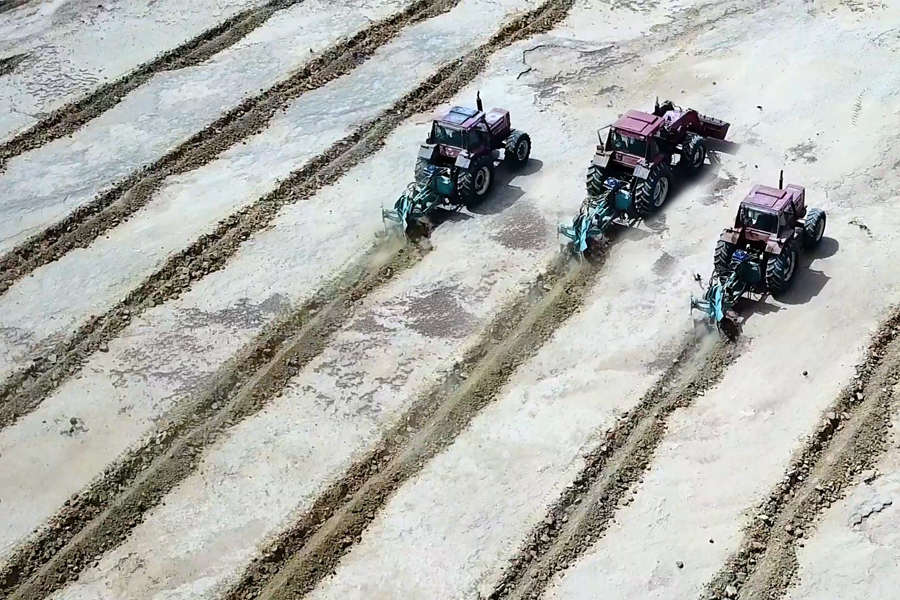
Technical specifications:
The work is carried out on the basis of a technical sheet, which stipulates the quantities and qualities of the work:
- length, depth, volume of the micro-basins – or half-moons.
- depth and volumes of subsoiling
- Adapted hydraulic structures
Hommes et Terre has the capacity in-house to produce cartographic reports of worked sites – both offline and online.
Mechanical capacity
For working degraded land, Hommes et Terre has:
- 7 tractors: Fiat AGRI 180/90
- 4 Delfino 3S – 2018 ploughs
- 1 Yeomans plough
- 1 maintenance garage – equipped with accessible spare parts
- Annual ploughing capacity: 8,000 ha.
Hommes et Terre has set up a logistics and after-sales service – including mechanical training, maintenance and the supply of spare parts.
Manual capacity
Hommes et Terre has the capacity and experience required to organise and carry out manual work. As a result, villagers manually dig half-moons. This activity increases everyone’s commitment and ownership, but it’s slower than the mechanical way and only achievable on a small scale, i.e. areas of maximum 80 ha per community. However, this manual approach does have an advantage, as the community feels more involved and sees the financial results of its work more quickly.
Revegetation and reforestation
Hommes et Terre has the experience and capacity necessary to create different types of vegetation by making available herbaceous and woody seed varieties as well as manure (goat droppings).
As a service provider, Hommes et Terre focuses on creating local jobs and it hires villagers to collect and treat seeds as well as manure. Hommes et Terre has set up a seed storage and treatment system in the Sahel, Centre-North and North regions of Burkina Faso.
To strengthen community ownership of local interventions, Hommes et Terre usually organises community sowing operations with the contribution of villagers.
To grow fruit trees, whose cultivation is more complicated, Hommes et Terre sets up nurseries. This is where trees are sown, before being transplanted as soon as they have reached a certain size.
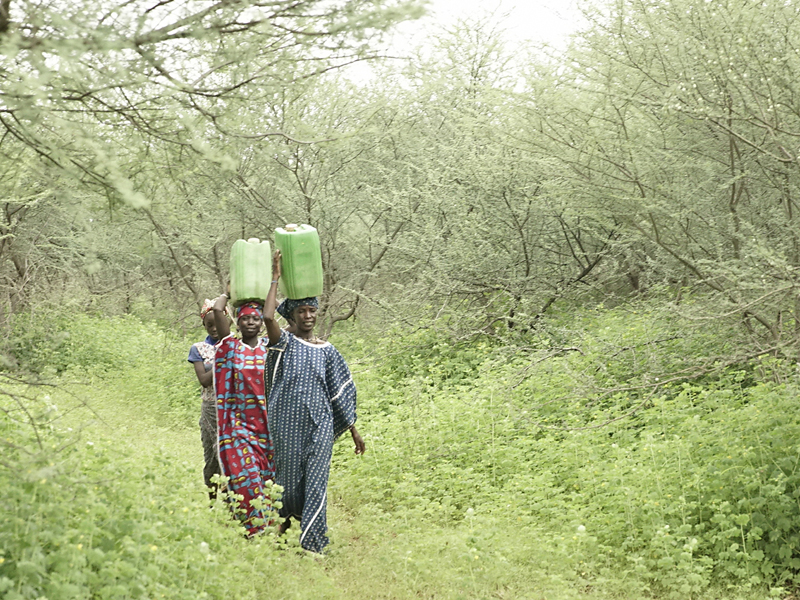
Woody species (16 different species):
Acacia macrostachya, Acacia nilotica, Acacia senegal, Acacia seyal, Acacia tortilis, Adansonia digitata, Balanites aegyptiaca, Combretum micranthum, Faidherbia albida, Hyphaena thebaica, Moringa oleifera, Piliostigma reticulatum, Pterocarpus lucens, Sclerocarya birrea, Tamarindus indica, Ziziphus mauritiana.
Herbaceous species (7 different species):
Alysicarpus ovalifolus, Andropogon gayanus, Glirisidia sepium, Eragrostis tremula, Panicum laetum, Schoenefeldia gracilis, Senna tora.
QUOTE I am text block. Click edit button to change this text. Lorem ipsum dolor sit amet, consectetur adipiscing elit. Ut elit tellus, luctus nec ullamcorper mattis, pulvinar dapibus leo.
Monitoring and follow-up
Forestry monitoring
Hommes et Terre hires a team of foresters. Their job is to monitor sites in recovery, by following scientific and adapted protocols.
Forestry monitoring, done between September and November, is carried out by combining field visits and gathering forestry data. Hommes et Terre is able to analyse Landsat satellite images, which help to provide indicators and advice on where plants can be grown on sites. The resulting data are interpreted and translated into remedial actions, which are adapted to each deficit and challenge. The monitoring protocol is available for this purpose.
Reinforcement or remediation actions must be continuous: reseeding, reopening closed half-moons, raising awareness, plus strengthening and updating the knowledge of communities.
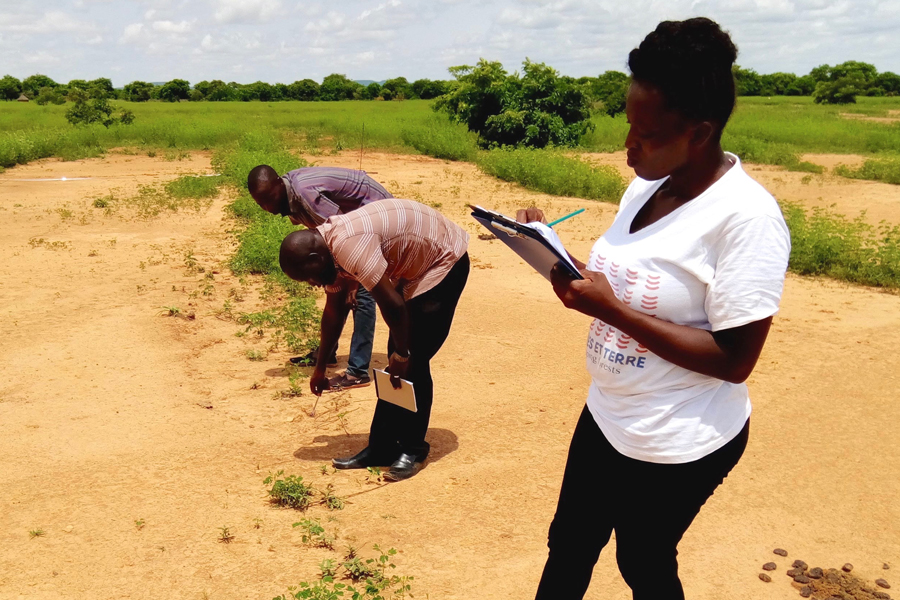
Socio-economic monitoring
Hommes et Terre seeks to optimise the socio-economic impact of its ecosystem restoration activities. Hommes et Terre aims to:
- create jobs,
- forge a profitable rural economy,
- boost people’s income in rural areas,
- strengthen community cohesion,
- enhance the economic and social status of young people and women. By empowering young people and improving their social status, emigration in this region can be stemmed.
To guarantee and maximise impact like this, Hommes et Terre measures the impact in its partner communities by undertaking a series of surveys. Hommes et Terre has the in-house skills to gather and process data, as well as to carry out targeted monitoring in communities according to specific socio-economic indicators.
With these data, it is possible to monitor and strengthen the impact of the various actions taken. Hommes et Terre therefore implements many of the sustainable development goals promoted by the United Nations.
Communication et training
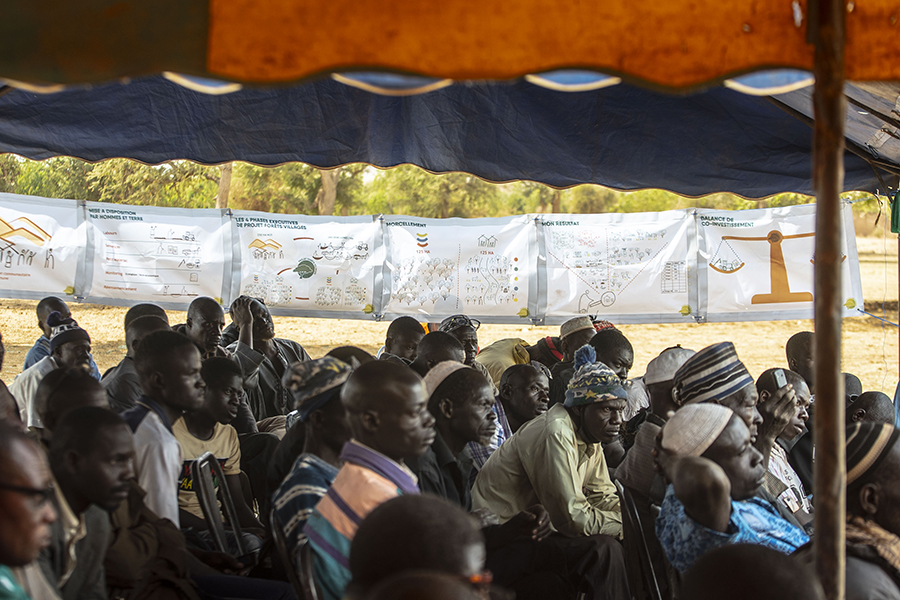
Hommes et Terre has a team of sociologists and communicators to develop materials for consultation and awareness-raising tools like consultation and participation sessions in the field.
Hommes et Terre has the capacity to mobilise and train village communities on the different aspects of recovery:
- Collection and treatment of primary materials – seeds and organic manure
- Sowing
- Protection against overgrazing, grubbing trees, etc.
- Remedial actions

Hommes et Terre has a team of sociologists and communicators to develop materials for consultation and awareness-raising tools like consultation and participation sessions in the field.
Hommes et Terre has the capacity to mobilise and train village communities on the different aspects of recovery:
- Collection and treatment of primary materials – seeds and organic manure
- Sowing
- Protection against overgrazing, grubbing trees, etc.
- Remedial actions
For this work, Hommes et Terre also has a team of videographers and editors specialised in participatory projects. This team makes environmental and forest awareness formats that are adapted to the different target groups (local communities and authorities):
- La forêt est fantastique (the forest is fantastic):
Selection of testimonials, recorded by older people and traditional chiefs, about the forest’s qualities.
- Homme Rouge et Homme Vert (Red man and Green Man):
Comic series on good practices and everyone’s responsibility: Don’t cut! Control the grazing!
- Le jeu de l’oie (snakes and ladders):
Game teaching children about the importance of forests.
Agroforesterie et valorisation
Dès que les terres dégradées gagnent en fertilité, il y a moyen de recultiver ces terrains. C’est un boulot que partagent Hommes et Terre et le Village Partenaire. Comme la restauration se fait sur des terrains de 250 hectares et que ce terrain est partagé par le village et par Hommes et Terre, chacune des deux parties se met à l’agroforesterie et contribue à la valorisation du terrain.
Souvent, Hommes et Terre est la première partie à prendre le risque (financier), avant d’être suivi par le Village Partenaire.
